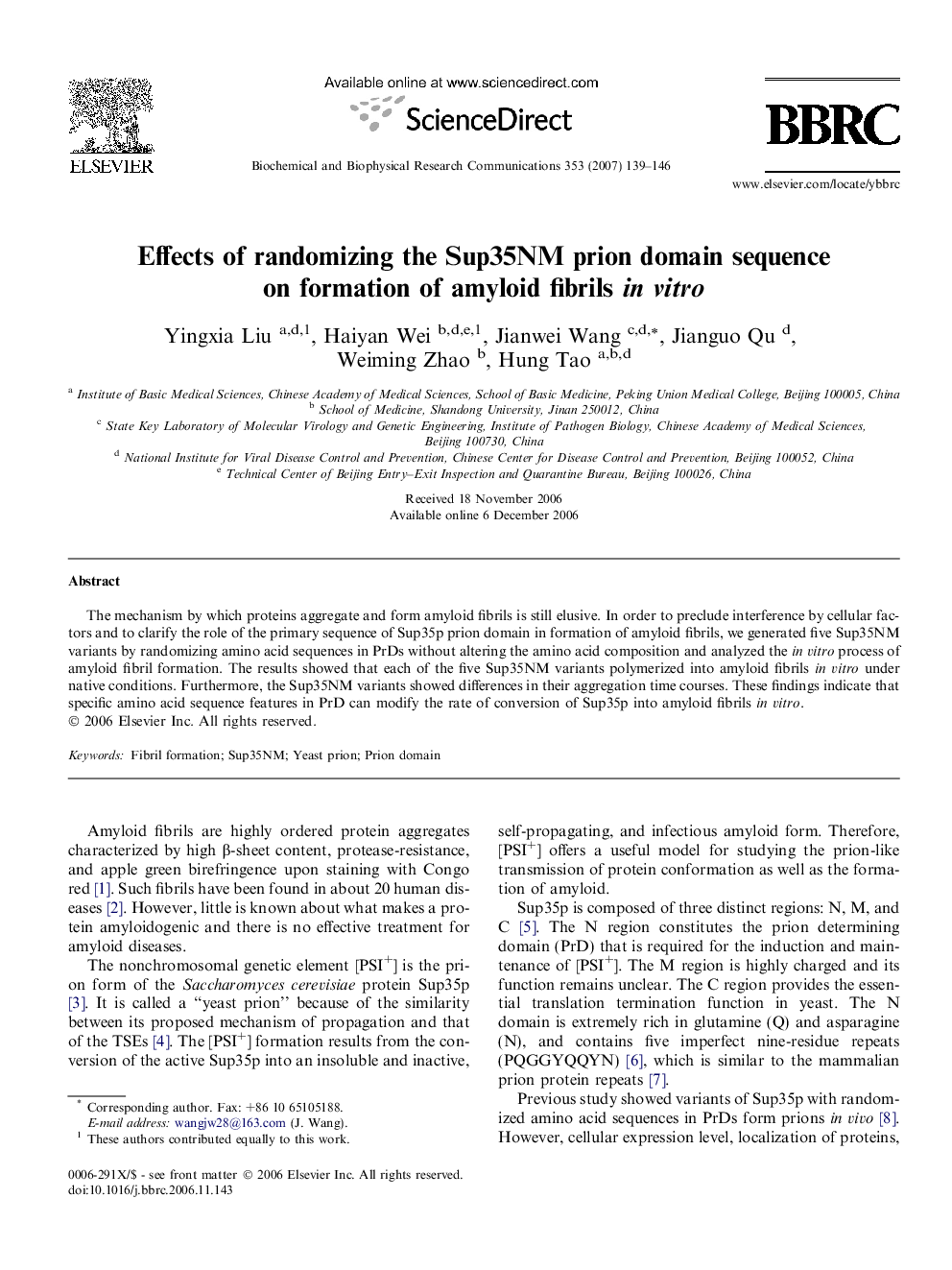| Article ID | Journal | Published Year | Pages | File Type |
|---|---|---|---|---|
| 1938066 | Biochemical and Biophysical Research Communications | 2007 | 8 Pages |
The mechanism by which proteins aggregate and form amyloid fibrils is still elusive. In order to preclude interference by cellular factors and to clarify the role of the primary sequence of Sup35p prion domain in formation of amyloid fibrils, we generated five Sup35NM variants by randomizing amino acid sequences in PrDs without altering the amino acid composition and analyzed the in vitro process of amyloid fibril formation. The results showed that each of the five Sup35NM variants polymerized into amyloid fibrils in vitro under native conditions. Furthermore, the Sup35NM variants showed differences in their aggregation time courses. These findings indicate that specific amino acid sequence features in PrD can modify the rate of conversion of Sup35p into amyloid fibrils in vitro.
